IC73104 to Przemysl
The station of Krakow Glowny is one of the worst examples of a so-called shopping station. The beautiful old station of Krakow is still there. When you are waiting for a train at the southern end of one of the platforms, you can see it. It is a kind of decoration. The former station square has been turned into a quiet park, the Plac Jana Nowaka-Jeziorańskiego. On the side of the arriving and departing trains they even have restored one of the old platforms. Complete with vintage lamps, cast iron posts and the typical clock it forms an extension of the canopy of the station building formerly serving platform number 1. There is nobody.
Entrance to Krakow Glowny station or, better, Galleria Krakowska
The main entrance of the new station, just to the north, leads into a shopping center, the Galleria Krakowska. Here you can buy boots, if you happened to arrive bare-footed, and the matching socks, jewelry, a gold fish, a new phone, toiletries or perfume in case you stink so much that you might be a nuisance for your future fellow passengers or get new glasses if you notice that you are unable to find the departure board.
The old historic Krakow station
Because you will have difficulties to find the departure board or a counter of polish railways PKP selling tickets and giving advice or a waiting room. After you have entered the glass front you will find one elevator letting you into the lower floor of the shopping paradise - woe betide if it's broken because there is no obvious other way for the new-comer to get down and access the platforms and your train after you have managed to pass even more businesses.
Traveling like a rat: the modern station
The Galleria Krakowska has been modeled after some inglorious precedents in the western hemisphere. There is Utrecht Central Station which was only accessible through a kind of maze via the shopping center Hoog Catharijne. The maze was laid out in a way that you have to pass as many businesses as possible, like when you enter the huge display area of a well-known Scandinavian furniture paradise and led around in meanders through the different departments. In Utrecht they have realized what a stupidity they made, have torn down and rebuilt the entrance of the station in a way that it is possible to enter without passing through the shopping center. It is probable that shortly after the end of the iron curtain some architect flew to the Netherlands, saw Utrecht Central Station and got the idea. Similar attempts were made in Milano Centrale or Praha - Hlavní nádraží. However, there the former station has been preserved in a glorious way.
Of course there are some useful businesses in the Galleria Krakowska. Some sell food and drinks for the traveler. However, PKP offers dining cars in many long distance trains and a catering service at your seat in all. With the galleria they create competition for their own enterprise.
Like many other European railway companies PKP announces the departure platform of your train only shortly before departure. Since there is no obvious waiting area it is better not to come too early otherwise you might get lost between the commerce. The real problem starts when your train is late. Fortunately this does not happen too frequently in Poland.
Bochnia station on the route Przemysl
After you have mastered to run the gauntlet of the businesses and found a screen announcing your departure platform you can proceed upstairs where the tracks are. You end up in one of those depressing, cavernous, dark and low concrete station halls where everybody hopes that his train will arrive soon because otherwise suicide is his most probable option. Needless to say that the roof of the concrete carries a car park. In this case, the architect probably had the idea from a visit to Paris Montparnasse or many Amtrak stations, where cathedrals of light have been turned into burrows for rats.
Platform on the way to Przemysl
Western European politicians regularly travel to Ukraine to proof their continuing support for the struggling country. Begin of May Friedrich Merz paid a visit, his first one as German chancellor after previous visits as representative of the opposition. And he was not the only one. French Prime minister Macron, Boris Johnson when he was Prime Minister, US secretary of state Anthony Blinken, Germany’s Annalena Baerbok, Polish Prime Minister Morawiecki, Italiy’s Mario Draghi and even notoriously hesitant former German Chancellor Scholz and many others took the train. There is a special night train for those important visitors. For many of them it probably is there first and only train ride and in particular night train ride. I ask myself how much sleep they actually get. There is a report that former British Prime Minister Boris Johnson slept well on the train. However, who would believe the words of Boris Johnson?
Waiting for a (different) train
The special night train for the politicians leaves from Przemysl, the last polish station before the Ukrainian border. To get there the important visitors fly to Rzeszov and transfer to the station by car.
I come by train from Olomouc after changing in Krakow Glowny. The train is full and I am afraid somebody would claim my seat because as always I travel without a reservation. Polish Intercity trains don’t have an indicator whether a seat is reserved or not. But I am left alone. I wonder why all these people want to travel to such a place at the end of the world. However, most get off at Tarnow, a town 45 minutes east of Krakow. From there it is another 1.5 hours to Przemysl.
Today Poland and Ukraine celebrate friendship and support in view of a common enemy. That was not always like that. The Polish-Ukrainian border area around Przemysl, formerly known as Galicia, was always a disputed frontier between Poland and Austria-Hingary to the West and Russia or Ukraine to the East.
The Mongolian invasion in 1240 made an end to the struggle between the Polish kings and the Ruthenian Rus rulers over the castle of Przemysl. At the time of the conquest it was an independent duchy under the ruthenian kingdom of the Rus of Kiev. In the 14th century the Polish regained the town and until the early 17th century its cosmopolitan population of Poles, Ruthenians, Jews and Germans enjoyed a period of prosperity. It came to an end as consequence of the Polish-Ottoman and Baltic wars of the 17th century.
Station square in Przemysl
With the first division of Poland 1772 Przemysl became part of the Galician eastern frontier of the Austro-Hungarian empire. For the Austrians the biggest threat was the Russian empire to the east. In the last decades before the first world war 125000 workers turned Przemysl into the biggest fortress in Europe after Verdun. The fortifications with a diameter of 45 km housed 140000 mostly Hungarian soldiers. The siege of Pzemysl is considered the largest during the first world war. When the fortress surrendered in March 1915 the remaining 110000 Austro-Hungarian soldiers became Russian prisoners of war.
View over the San valley
The Russian empire did not enjoy their new possession for very long. Already in June 1915, embarrassing enough for the Austrians, the Bavarians as part of a Gerrman counter-attack took possession of the fortress.
With the collapse of the Austro-Hungarian empire at the end of the first world war there was a short struggle between Polish and Ukrainian parts of the population about the possession of the town. Eventually Przemysl became part of Poland.
With the Stalin-Ribbentrop Pact the town became a symbol for the division of Poland: the part north of the San river was occupied by Nazi Germany’s forces while the town center south of the river was occupied by Russian forces. The Germans took their chance and immediately massacred 600 Jewish residents. The others followed when the remaining parts of the town were occupied with the German attack on the UdSSR in 1941.
Already in July 1944 the town was reconquered by Soviet forces. According to the Allied agreements it became part of Poland in 1945. After the communist Polish authorities took over, all the Ukranian residents of the area were forced to relocate into Soviet territory. There they were massacred by Stalin.
I wonder if the protocol of any of those important travelers on their way between airport, car transfer and night train are given the chance to have a look at Przemysl today. After all the historic turmoil it is a miracle that most of the historic old town center has survived.
All these periods of history have left their traces in the center of Przemysl. Sweating and panting I slowly make my way up the cobbled streets to the castle park on the hill overlooking the town. The oldest part, the foundations of a palatium go back to 1018. The main gate is from the time when Kasimir reinstated Polish rule in 1340. After 1514 the castle was turned into a royal palace and more and more baroque elements were added.
The multiethnicity of the residents of Przemysl led to a variety of churches and monasteries. A multitude of steeples dominates the town center. Originally built in Gothic, they were later generally redecorated in Baroque style. Like most of the restored historic buildings in the town center they are painted in the pleasant pastel yellow tint which gives historic Austrian – Hungarian cities their typical warm, friendly and welcoming feeling.
Like in the rest of Poland the catholic church is predominant. Premysl is the seat of a bishop and there is a cathedral on the slope below the castle.
A stone’s throw away the cathedral of St John the Baptist in Przemyśl serves as the mother church of the Ukrainian Greek Catholic Archeparchy. It was built as a Jesuit catholic church, but later under Austrian rule turned into a storehouse after the order had been suppressed. Only in 1991, after intervention of the pope, the catholic church donated it to the Greek Catholic community. Roman catholic believers protested and some even went into a hunger strike.
Maybe the protesters were annoyed since the Greek Catholic church towers above the Roman Catholic Sanctuary of the Immaculate Conception, the important church of the Franciscan monastery. In any case, it is sunday evening and there are servicres in all the churches. While the church of the Franciscan monastery is full of believers but there are few leaving the Greek Catholic church.
The platform around the entrance to the cathedral of St John the Baptist offers a nice, quiet spot to sit down and draw a design of the massive church of the Franciscan monastery. Somewhere down the street somebody with a harmonica entertains a group of children. The sound of his songs echoes in the narrow streets. After each song there is enthusiastic applause and laughter from the invisible audience. Like in Olomouc the week before the peaceful atmosphere is only interrupted by the brute noise of the odd car rumbling across the cobblestones.
High above all, on a terrace, rests the church and monastery of the discalced Karmelites. The order of the discalced Karmelites was dissolved by Austrian emperor Joseph II in 1784 after this part of Poland had become part of the Austrian empire due to the first partition of Poland. It was then given to the Ukrainian Greek Orthodox church. That is why, like the Greek Catholic cathedral, it has a separate Belfry with three bells. However, after 1945, when the new communist leaders of Poland had expelled the Ukrainian part of the population, the monastery was again occupied by Karmelites. This led to tensions with Ukraine after Poland’s independence in 1991, when the Ukrainians wanted to have their church back. On the other hand, the Latin catholic believers took offense at Cyrillic inscriptions at the belfry and the Karmelites demolished the church’s Austrian dome as “unpolish”. Eventually this last Polish-Ukrainian conflict was solved by giving the cathedral of St John the Baptist to the Ukrainian Greek Catholic church instead.
Przemysl became important as trade hub at the crossing of the San river. Rich merchants built their mansions. They line the Rynek, the market square, on three sides. The square slopes down like an amphitheater. The mansions on the upper side sit above an arcaded walkway. The lower floor was used for storage.
When the heat of the evening has subsided the locals meet at the Rynek, which is free of traffic, to chat, let their children play or walk their dog. The atmosphere is quiet and peaceful. There is no Ukrainian flag and no indication that drones and bombs might fall just a short distance away across the border.
Neglected houses in the Austro-Hungarian residential quarters
The town center of Przemysl is a show case of Austro-Hungarian art-deco. Buildings from the 19th century with abundant ornamentation line the cobbled streets. The more you move away from the Rynek the less restoration has been done. The predominant color becomes gray with traces of soot all over the surfaces. There are cracks in the stucco and whole parts have fallen down to reveal the brick-work underneath. However, many of the windows have been replaced by modern double glazing. Some people in a desolate looking building have decorated their balconies with displays of colorful flowers which form a friendly contrast to the battered gray facades. There is just enough neglect to remind the passer-by of past times of turmoil.
On the side-walk of one of the busy thoroughfares around the old town an oversize, inflated copy of the good soldier Schwejk tries to motivate passers-by to enter a pub and have a beer. Although Schwejk and his literary father Jaroslav Hašek were Czech there is a connection to Poland. Despite their desperate attempts to stay away from the slaughter of the first world war, Schwejk and his superior, Oberleutnant Lukasch, eventually end up at the Russian front. Lukasch dies in battle at a place which could very well have been the fortress of Przemsyl. Remnants of the fortress are all-over the surroundings of the town. A museum is dedicated to its history.
Schwejk reminds me that it is time for dinner. I find a restaurant at another quiet square where children splash around in a fountain. They are modern here: the menu is only in Polish, but when you scan a QR code you get an English translation. I order garlic soup and Krautwickel, stuffed cabbage, local specialties, and one of those dark beers with a consistency like oil and a slight sweet taste which seem to be only available in countries of the former Austrian-Hungarian empire..
The Accademia hotel
My hotel is the representative of the most recent era of Polish history. An enormous concrete block rising next to the San river, it is built in the typical brutalist style of communist architecture. To inspire awe, a concrete stairway leads up to the entrance hall which basks in gloomy darkness. The elevator leads to an aisle on the second floor which is so dark that it is hard to read the room numbers. However, the simple room has a view across the river. After the last brawl of some drinkers in an open-air bar along the bank has stopped the air is filled with the sound of flowing water and a concert of frogs.
The station of Przemysl is an Austro-Hungarian beauty rebuilt in 1895 from the original station from the beginning of the railway era in 1860. It was painstakingly restored to the historic appearance between 2010 and 2012. The restoration includes historic chandeliers in the waiting room and decorative paintings in the main hall symbolizing different crafts and coats of arms.
It is no mistake to arrive early at Przemysl Glowny station. The art-deco station cafe is one of the most beautiful I know and can only be compared with the few similar establishments like in Praha hlavni Nadrazi or Denver Union station. The walls are decorated with false columns and balconies and paintings of the historic town. They serve excellent breakfast here and their choice of cakes is tempting.
For its size and remoteness Przemyśl Główny has a remarkable number of long distance connections. There are direct trains to Praha and to Graz via Vienna. Polish connections include named trains like the "Małopolska" express to Gdynia and the "Przemyślinin" express train to Świnoujście. With a distance of 1,008 km covered in around 18 hours this Polish Orient Express is the longest through train service in Poland.
Although 500.000 Ukranian refugees have passed through Przemysl station already in the first couple of month of the Russian invasion of Ukraine there are no Ukrainian flags. There is a welcome center recognizable by a red flag in the main station hall.
Ukraine, like Russia and the other former Soviet areas, has a rail gauge of 1524 mm while Poland uses the common European gauge of 1435 mm. The trains to Ukraine leave from the broad gauge tracks on platform 5. Every evening there are three regular night trains to Kiev, Odessa and Saporizhzhiya. At daytime there are several trains to Kiev and Charkiv. It is interesting that the Ukrainian railway is able to provide safe and reliable transport over long distances and in the middle of a war where permanent menace is looming in the air. At the same time, for example, the Dutch railways NS blows surrender and closes a line for weeks for every badger building a den near the rails or a stork building a nest on an electricity mast or the German railways DB cancel a train because there is too much luggage in the aisles or the air conditioning is not working.
Sources:
Lewis Baston, Borderlines, hodder press, 2024


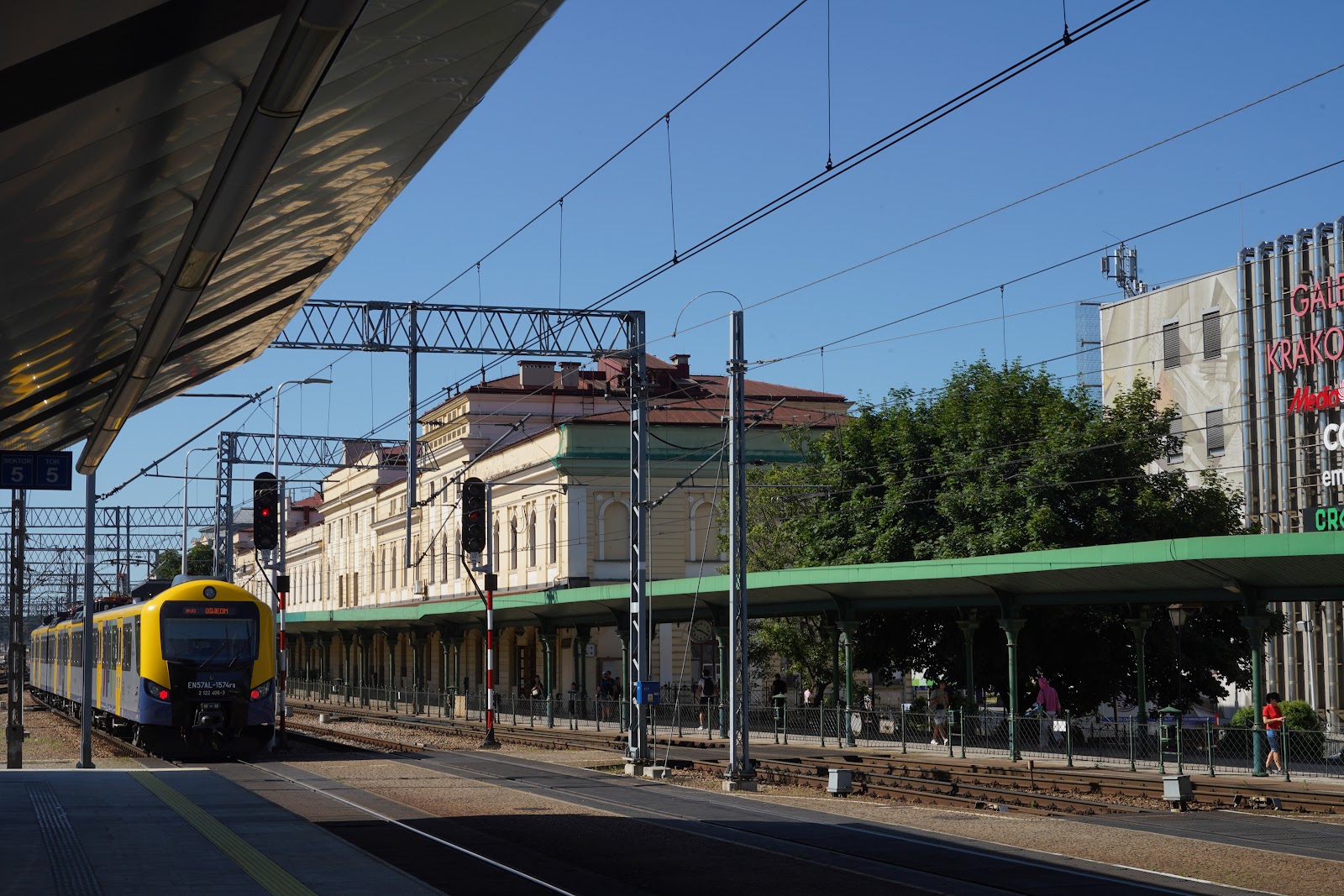

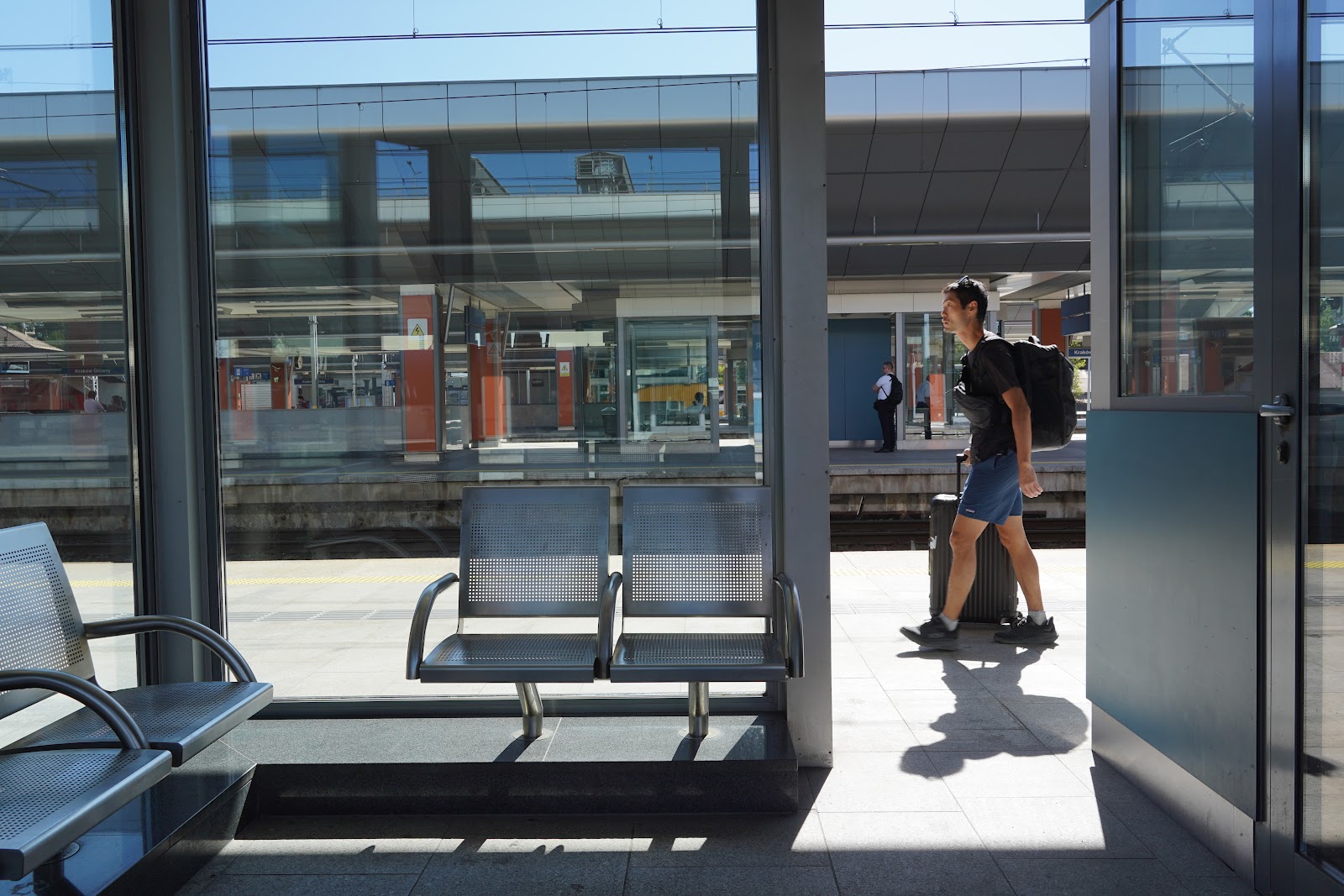
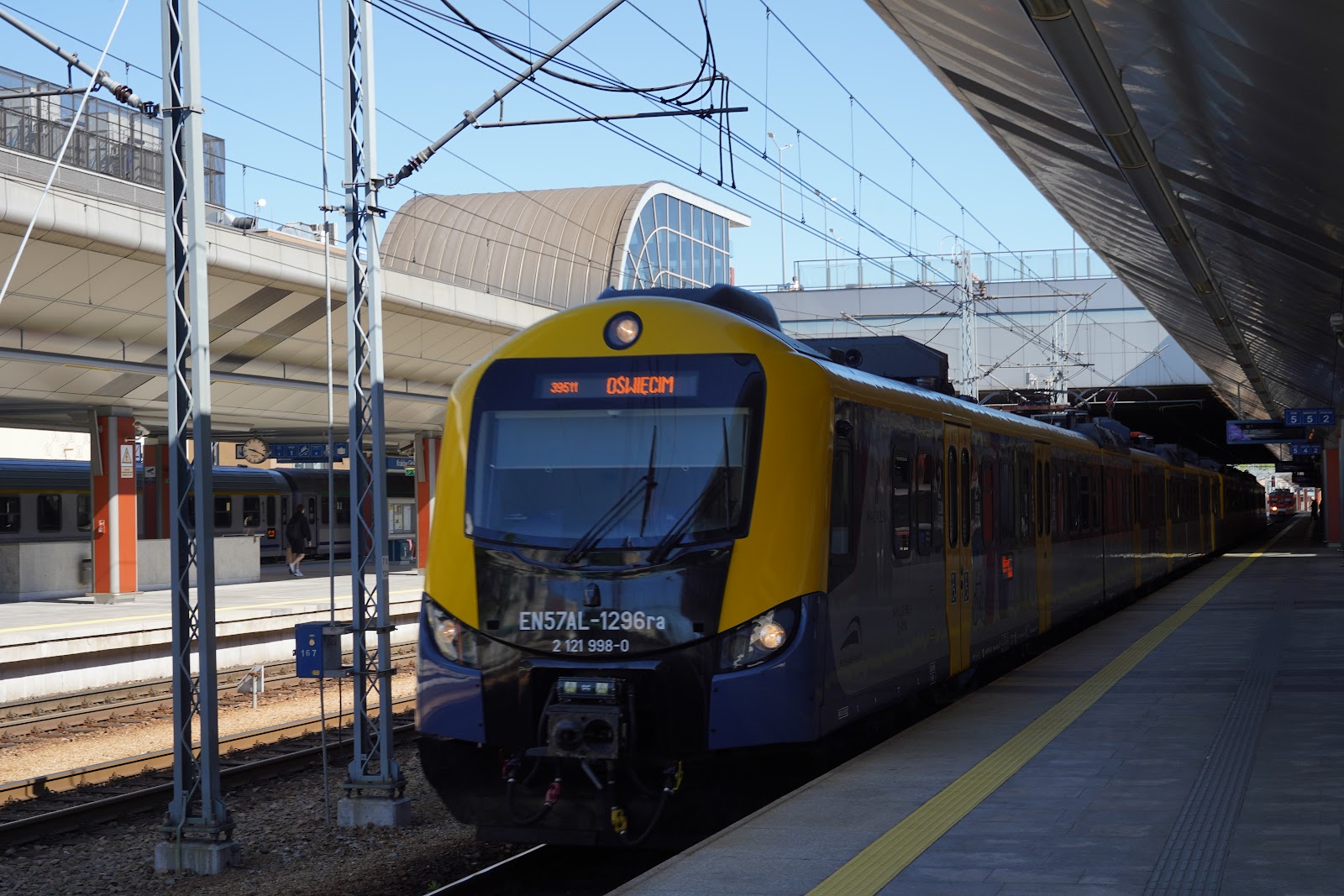
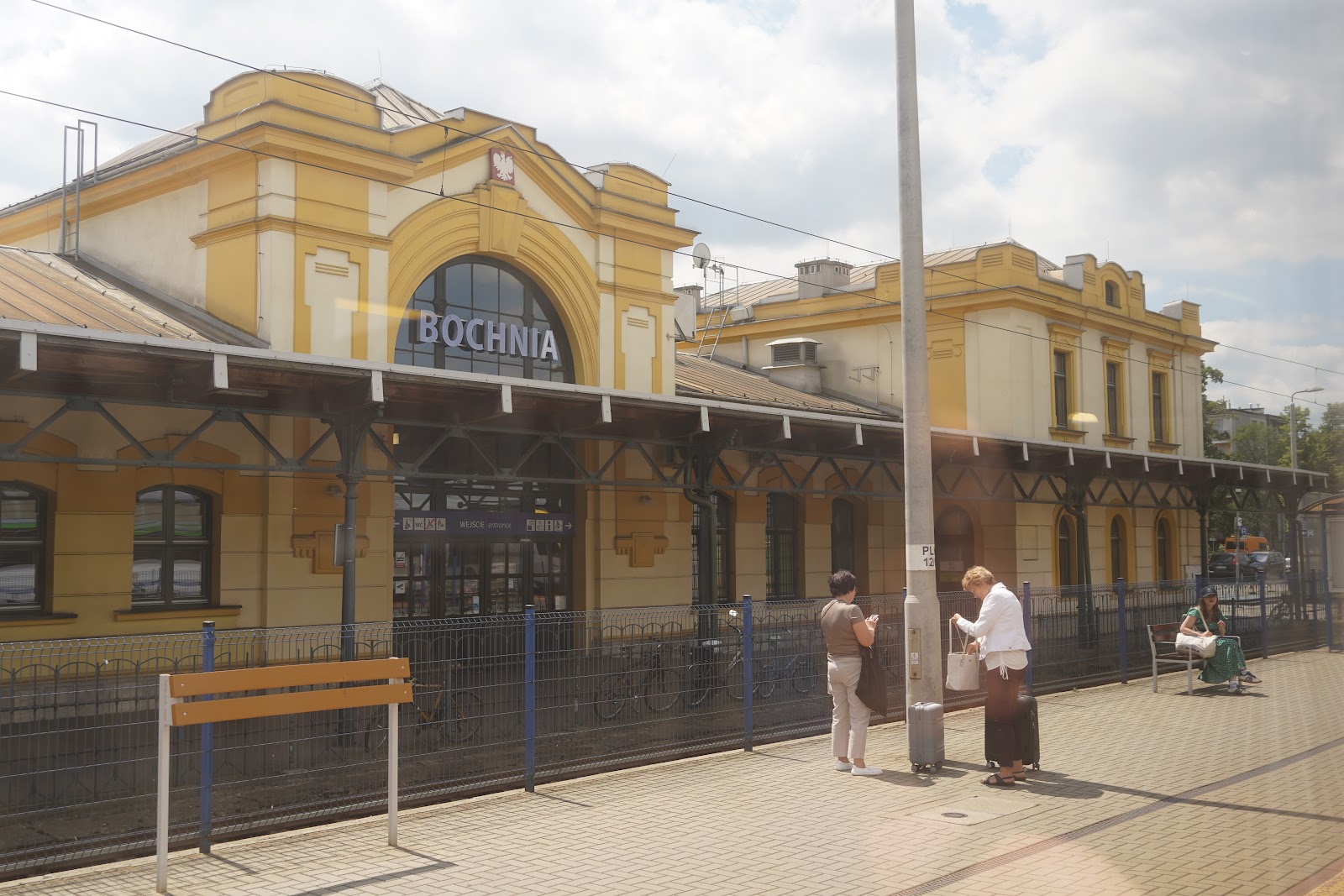
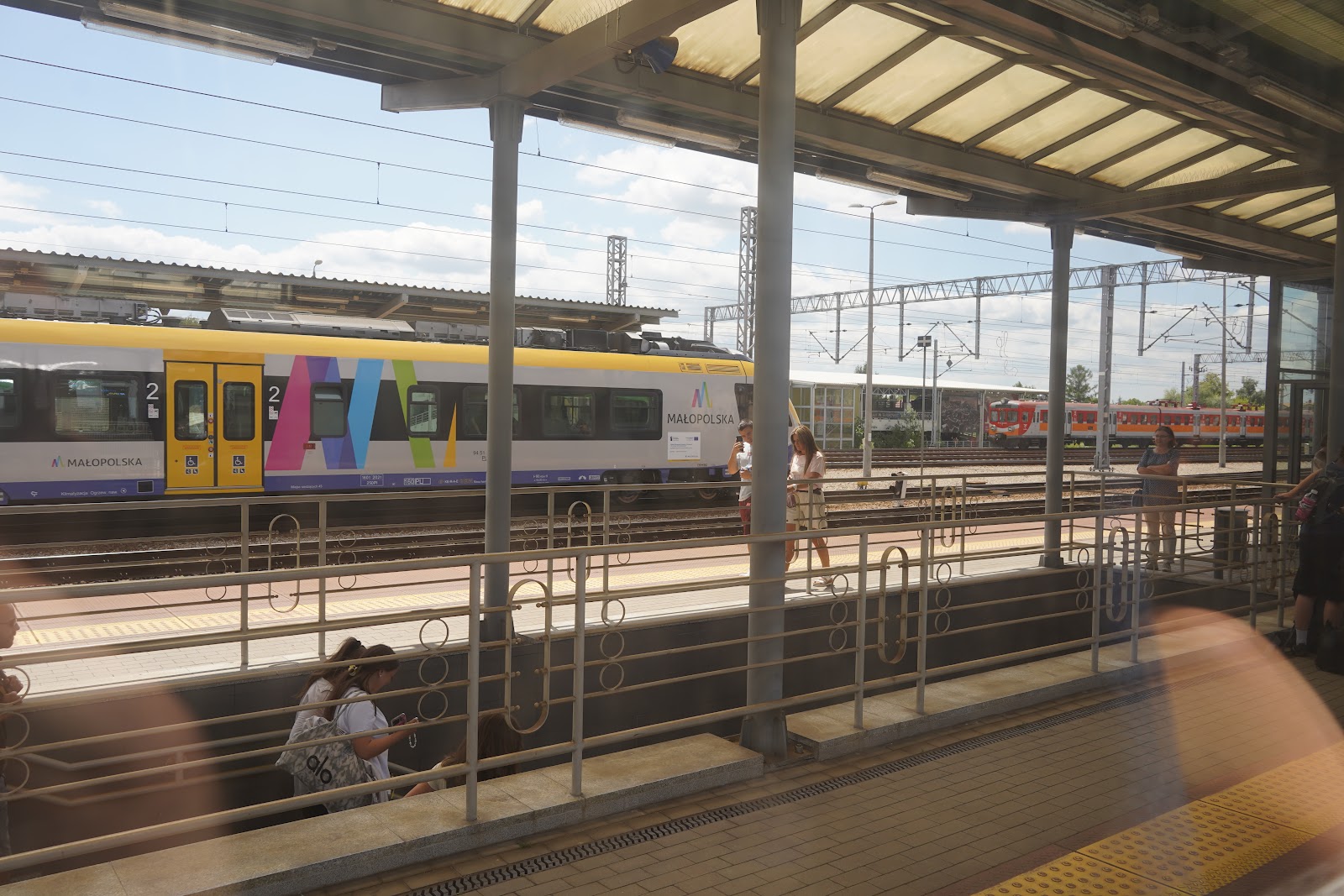








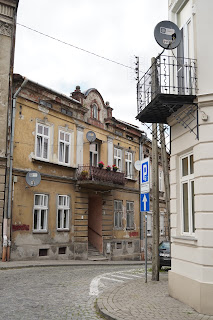
























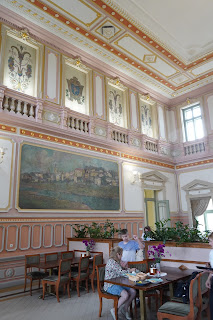



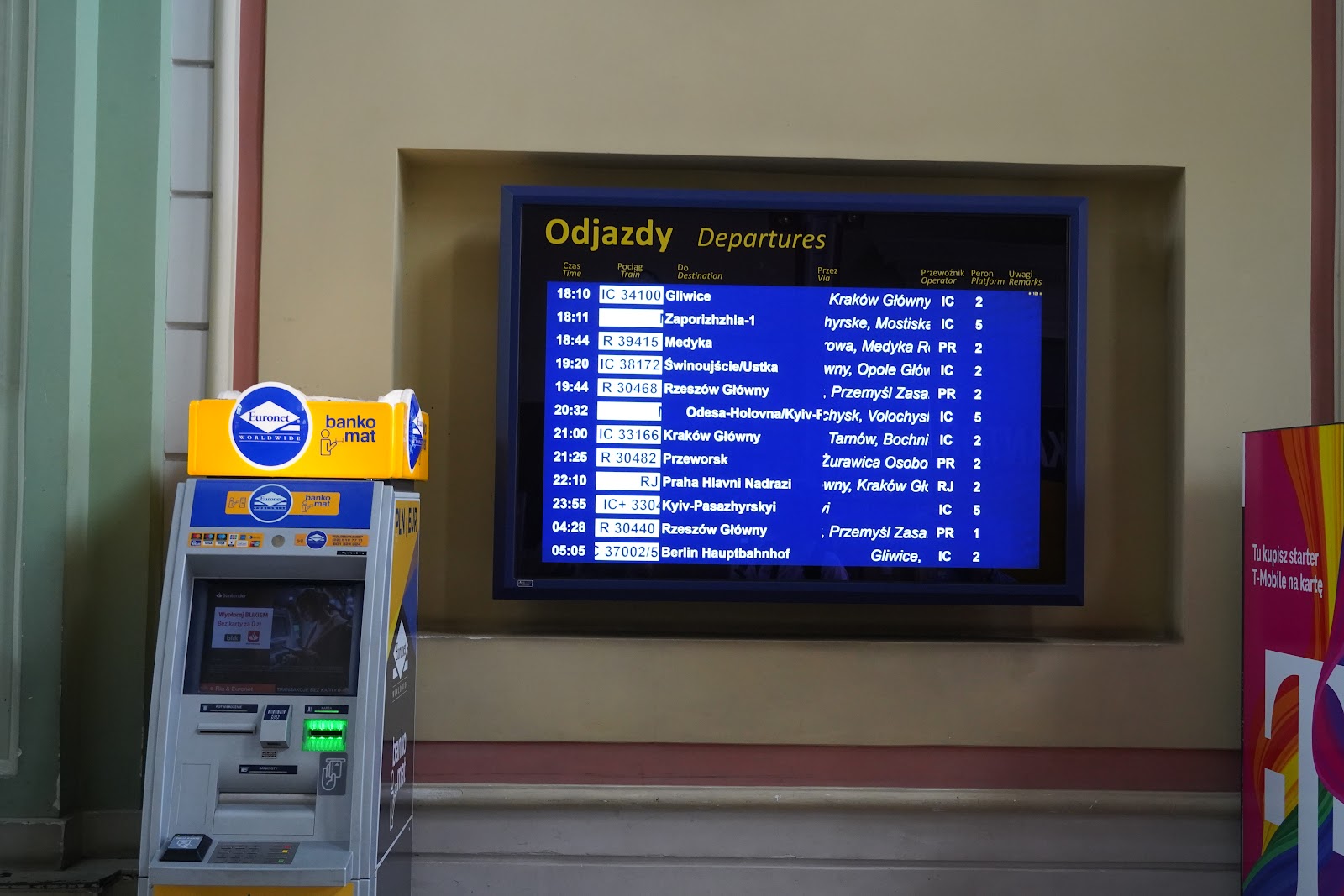

No comments:
Post a Comment